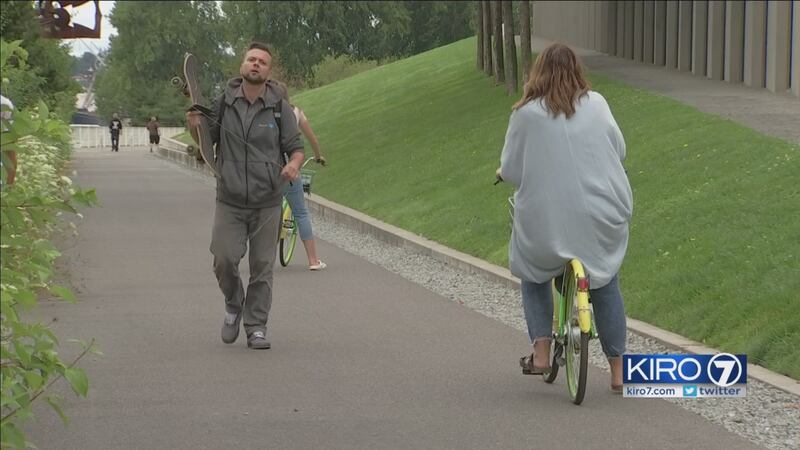SEATTLE — The city of Seattle says it's cracking down on speeding-- if you're a cyclist. It starts with new speed limit enforcement on the city's trails.
Even on a gray, cloudy day, Seattle’s Elliott Bay Trail through the Olympic Sculpture Park is packed with people utilizing various forms of transit, from bikes to electric unicycles to the always timeless mode: feet.
Some are speedy, some are leisurely, and all are now required to travel under 15 miles per hour.
Following citizen complaints, the city of Seattle's Parks and Recreation Department is implementing a speed limit on five multi-use trails, including the Ellliott Bay and the popular Burke-Gilman Trail that runs through Ballard.
“I use it five days a week to come into work,” Troy Glennon told us.
He’s an Elliott Bay regular who rides an electric bike, which is not technically permissible on the trail.
Scroll down to continue reading
More news from KIRO 7
- Woman finds squatters in backyard of Seattle home
- Homeless quadriplegic veteran living outside VA struggles to get healthcare
- PSE sends racial slur to black woman
- Girl burned by coals left on beach at state park
- Fuel tanker overturns under West Seattle Bridge
Along with the new speed limit, the city will open its trails to electric bikes, although Glennon is proof there’s been little enforcement of the rules on the routes before. Because of that, Glennon wants to know what’s different now when it comes to enforcing the speed limit.
“We can’t even make sure everybody wears a helmet. I mean, that’s the most obvious bicycle infraction and we can’t even handle that,” Glennon said.
The city says enforcement will be reactive; they’ll send officers to issue warnings or even ban speeders from using the trail only after they receive complaints. Some citizens wonder if more regulation is even necessary.
“I haven’t ever felt like people are rushing by me and it’s going to cause something unsafe,” said Emma Ferguson, who often runs on Seattle trails.
Both bikers and pedestrians tell us they rarely if ever see anyone going 15 miles an hour.
“So long as they say something when they’re going to pass, that’s the thing I think makes the biggest difference,” Ferguson explained.
Glennon says what would make the biggest difference for trail-users is spending city money on infrastructure.
"Improving parks, widening bike lanes and pedestrian access,” Glennon concluded.
Cox Media Group








